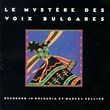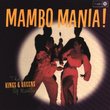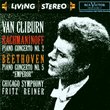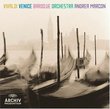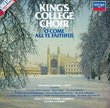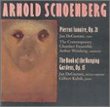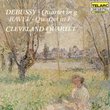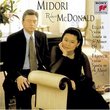| All Artists: Orlande de Lassus Title: Orlandus Lassus: Missa Osculetur me Members Wishing: 0 Total Copies: 0 Label: Gimell UK Release Date: 7/9/2002 Album Type: Import, Original recording reissued Genre: Classical Styles: Opera & Classical Vocal, Historical Periods, Early Music Number of Discs: 1 SwapaCD Credits: 1 UPC: 755138101821 |
Search - Orlande de Lassus :: Orlandus Lassus: Missa Osculetur me
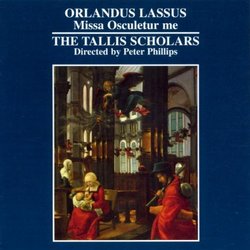 | Orlande de Lassus Orlandus Lassus: Missa Osculetur me Genre: Classical
|
Larger Image |
CD DetailsSimilarly Requested CDs |
CD ReviewsThe Tallis Scholars have pierced ears! Adam Cole | Menlo Park, California | 01/29/2003 (3 out of 5 stars) "I bought this disc as a rehearsal aid for an impending performance of the title work, a wistful-sounding mass for double choir based quite transparently on the motet _Ocsuletur me_. I'm always torn when assessing the work of the Tallis Scholars. They possess a great sense of ensemble, flawless intonation, and excellent vocal blend that give them irrefragable bragging rights. Their recordings, research, and advocacy have brought much beautiful and often-obscure music to brilliant light, and for this alone we owe them a debt of gratitude. But their native brilliance can be overbearing in a quite literal sense: director Peter Phillips insists on using women for the higher cantus/superius and altus parts, and transposes everything up a minor third (anyone for Tallis in 5 flats?). The result is a piercing, top-heavy sound that is wearing on the ear despite its purity of tone. (With less sublime voices, it would be merely shrill.) The bass line is forced into a "baritenor" register that often fails to anchor the music. As if to prove the point, TS have included the motet _Hodie completi sunt_, sung by 6-part men in a "normal" (i.e., lower) register in which the bass descends to low D or Eb repeatedly. The weightiness and warmth of this exuberant piece made the Missa and other mixed selections pale by comparison. For this track alone, I'm glad to have made this purchase. Some people get quite worked up over the issue of women vs. boys vs. male falsettists on upper parts. In my view, boys' voices have an unearthly beauty but frequently lack the requisite discipline, while even the most highly skilled falsettists (Chanticleer, Gabrieli Consort) often sound strained. I think the best-sounding solution is to use female voices that skew towards the alto and mezzo side, and keep the pitch down so the bass range is fully utilized. (Chapelle Royale/Herreweghe do this marvelously on their recordings of Lassus' Lamentations and Schutz's Musikalische Exequien, both of which I heartily recommend). The Tallis Scholars' approach of transposing everything into the stratosphere may be a necessity given their roster of (very talented) high sopranos, but it unfortunately does not maximize musical enjoyment." Let the music kiss you FrKurt Messick | Bloomington, IN USA | 07/01/2004 (5 out of 5 stars) "--Orlandus Lassus-- A composer of the late Renaissance period, Orlandus Lassus was born in 1532. Franco-Flemish in background, there is a legend that he was kidnapped three different times during his boyhood for his exquisite choir voice. Lassus produced over 2,000 works in Latin, Italian, French, and German vocal genres, practically every one known in his time. His versatility is virtually unmatched. Among the 2000 pieces were 530 motets (on religious and secular themes) and over 60 masses. His career was spent in the Low Countries, in Italy, and in Germany, and he traveled extensively throughout other European countries. He died in 1594 one of the most celebrated composers of the age.--Motets-- Motets (in this sense) are choral settings of Latin religious texts, generally in four to six voiced parts, sometimes more. The first motet, `Osculetur me', is the basis of the mass that is performed on this disc. Other motets featured here carry the same qualities, with some embellishments and differences. `Alma Redemptoris Mater' uses a double-choir arrangement as does the first motet; the other Marian motets are in six- and seven-part arrangements. `Hodie completi sunt' is a strong contrapuntal piece, and `Timor et tremor' is a unique piece, anticipating some of Gesualdo's work in the next generation.--Missa Osculetur me-- The mass here consists of the classic parts - Kyrie, Gloria, Credo, Sanctus, Benedictus, and Agnus Dei. This is one of three double-choir masses Lassus composed. There is long phrasing, constrasting moods, and techniques that compare favourably to the greats Palestrina and Tallis in terms of both parody and original composition. There is a power and force in the music that can, unrestrained, become overpowering. Here it is sublime.--Liner Notes-- Being internationally acclaimed, the Tallis Scholars' CDs typically present their commentary and texts in English, French, German and Italian (together with any Latin texts); that is true of this disc. The cover art also typically represents visual arts contemporary with the compositions - here it is an Albrecht Altdorfer, The Nativity, circa 1520, from a collection in Munich. --The Tallis Scholars-- The Tallis Scholars, a favourite group of mine since the first time I heard them decades ago, are a group dedicated to the performance and preservation of the best of this type of music. A choral group of exceptional ability, I have been privileged to see them many times in public, and at almost every performance, their singing seems almost like a spiritual epiphany for me, one that defies explanation in words. Directed by Peter Phillips, the group consists of a small number of male and female singers who have trained themselves well to their task. Their recordings are of a consistent quality that deserve more than five stars; this particular disc of pieces by Orlandus Lassus deserves a place on the shelf of anyone who loves choral music, liturgical music or Gregorian chant, classical music generally, or religious music. It is wonderful musically and spiritually. The music on this disc was originally recorded in 1989 at the Church of Sts. Peter and Paul, Norfolk, one of their favourite recording sites." The Best Choice Available Giordano Bruno | Wherever I am, I am. | 05/19/2009 (3 out of 5 stars) "Orlande de Lassus (1532-1594) was unquestionably the most prominent composer of the 16th Century, and one of the most prolific. At least sixty polyphonic masses of his have survived, plus hundreds of chansons and madrigals in French, Italian, German, and Latin; he was the only composer of his era who wrote in the four languages, by the way, and with attention to the idiomatic nature of each. He wrote over a hundred Magificats, and in his later years a series of glorious large-scale liturgical settings of the Lamentations for Tenebrae and other penitential texts. From his very successful tenure at the court of the Dukes of Bavaria in Munich, his music and his influence spread through Europe. His students include both Gabrielis, who came to him in Bavaria. He was knighted by both Emperor Maximilian II and Pope Gregory VIII. Musical 'headhunters' from almost every major court of Europe attempted to recruit him, but his position in Munich was attractive enough to keep him there; after all, he enjoyed the services of an enormous corps of the best musicians of his time.
And yet... there are amazingly few good recordings of his music available on CD, perhaps no more than half a dozen. Of his large liturgical compositions, the best recordings are three by Philippe Herreweghe (Lagrime di San Pietro, Hieronymae Prophetae Lamentationes, & Penitential Psalms) and one by Konrad Junghänel with Cantus Cöln (Prophetiae Sibyllarum), which I've already reviewed. Of his masses, there are fewer than ten available recordings. I wouldn't give any of them five stars; in fact, this CD of Missa Osculetur Me, sung by the Tallis Scholars in 1989, is the best of a not too competitive field. Lassus's masses are on the whole his most conservative compositions. His motets are more adventuresome harmonically and expressively, and among them the Motet Osculetur Me is a polished example. The mass based on that motet is one of three that Lassus composed for double choir late in his career; although most of the renown for double choir composition has been given to the Venetians, Lassus was certainly one of the prime inventors of the form, and in this work he edges as close as any polyphonist did to the birth of the Baroque. There are six earlier, more typically Franco-Flemish motets included after the mass on this CD. There are weaknesses in The Tallis Scholars' execution of this mass, already noted by two previous reviewers, Adam Cole and George Peabody. The treble voices are sung by women, which necessitated a transposition upwards of a major third, at the cost of resonance in the tenor and bass parts. The alto lines are shared by male and female singers, at the cost of coherence of timbre. The whole performance thus becomes too bright and brazen in the upper voices, and the polyphony, even in a composition of more `verticality' than most of Lassus's works, loses shape. Otherwise, however, conductor Peter Phillips clearly has a strong sense of this music and interprets its sectional structure very insightfully, though his tempi do get monotonous. It falls short of five stars in my mind, but it's the best choice you'll find for the time being." |

 Track Listings (12) - Disc #1
Track Listings (12) - Disc #1